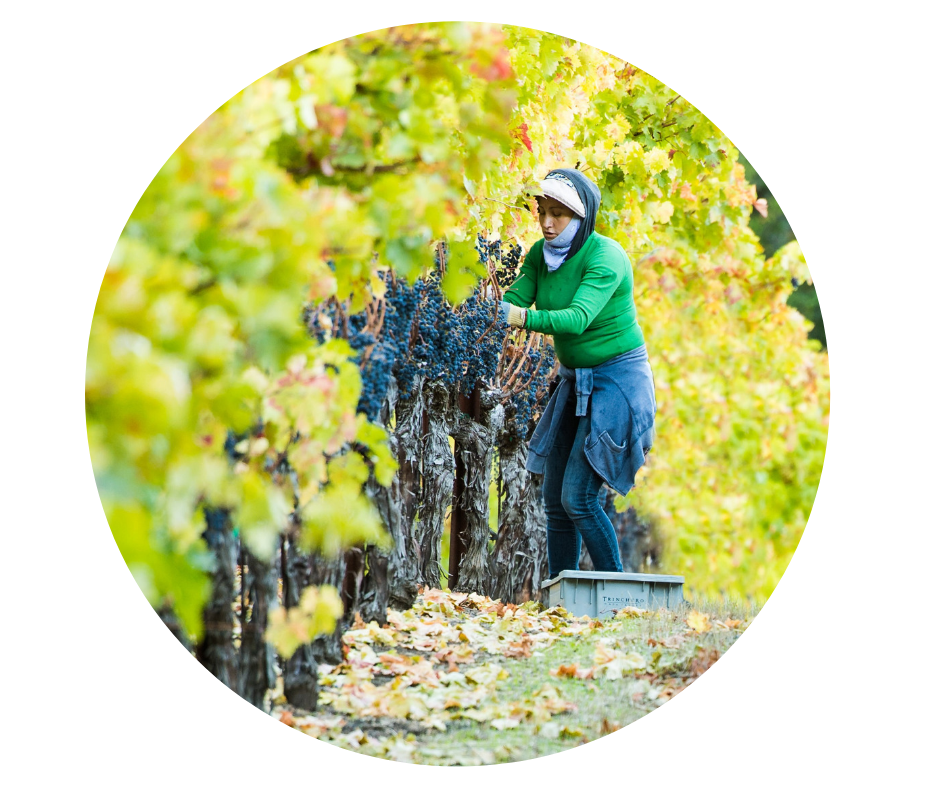In the 1980s, I worked for a week picking grapes 10 hours a day as part of a harvest crew for Cakebread Cellars in the Napa Valley. I was assigned to a foreman (Mr. Miguel to me) who didn’t hide the fact that he hated the idea. No woman had ever been on one of his crews, never mind a Caucasian woman from New York. But Jack Cakebread was Miguel’s boss and after much pleading on my part, Jack had agreed to let me come out and work the harvest.
To be inside a closeted world dominated exclusively by Latino men was simultaneously fascinating, startling, and unsettling. It was also, of course, an opportunity so rare I doubted many other women would ever experience what I had.
I was wrong.
Quietly but steadily over the last few years, women—Latina women—have moved onto vineyard crews in numbers that would have been unthinkable even a decade ago. Five years ago in the Napa Valley, for example, women represented fewer than 5% of vineyard workers. Today, they represent almost 30% and importantly, their ranks in full time vineyard management are now well established.
Much of the research in this area has been conducted by Malcolm Hobbs and Monica Cooper, part of the University of California at Davis’ Cooperative Extension Program. Their report Changing Gender Diversity of the California Vineyard Labor Force and Implications for Grape Production reveals an enormous cultural shift within the California wine industry.
According to their research, between 2013 and 2016, the percentage of female seasonal crew workers rose 24% in Napa Valley. The increase was just slightly smaller for permanent crew and supervisor/crew leader positions. Interestingly, the percentage increase was considerably smaller for managerial positions, but surprisingly that was only because by 2000, Latina women already held a significant percentage of managerial positions in vineyard operations.
Hobbs and Cooper asked men in vineyard management about having women on work crews. Said Hobbs, “Most men reported that it was the best thing that’s ever happened. We found that women on work crews helped crews to solve problems quickly. And that crews with women had lower turnover rates.” And while much of the Hobbs/Cooper research has been conducted in the Napa Valley, the authors believe that the gender diversity observed in Napa is mirrored or even exceeded in other parts of the state.
What is driving the influx of Latina women into vineyard work? According to Hobbs, the number of Mexican farm and vineyard workers coming into the U.S. has declined sharply in recent years leading to a labor crisis for California wineries. “In addition, women on work crews often tell us that they prefer vineyard work to the other limited options open to them such as house cleaning and janitorial work,” said Hobbs. “Initially many women enter the vineyard labor pool as seasonal workers but are then offered promotions and permanent positions.”
While many of the male vineyard managers and male crew members interviewed reported liking having women as part of their crews, Hobbs and Cooper point out that gender diversity can also lead to dysfunction. The pair are currently looking at sexual harassment on vineyard work crews. The findings thus far:
30% of women reported being harassed by “micro aggressions”—bad jokes, taunts, jeers, etcetera
9% reported having been stalked or touched inappropriately
2% reported sexual coercion
Women who were under 40 years old and women who did not have other family members on the crew were the most vulnerable and tended to be harassed more than other women.
I have no idea if harassment on California’s vineyard work crews is greater or lesser than in U.S. society at large, and at any level, it is of course unacceptable.
But I have to admit a feeling of great admiration for Latina women who now have a role in producing some of the best wines made in California.
Today it’s the vineyard; but perhaps tomorrow for these women, it will be a master’s degree in winemaking from U.C. Davis.
Photo by Bob McClenahan for Trinchero Family Estates

